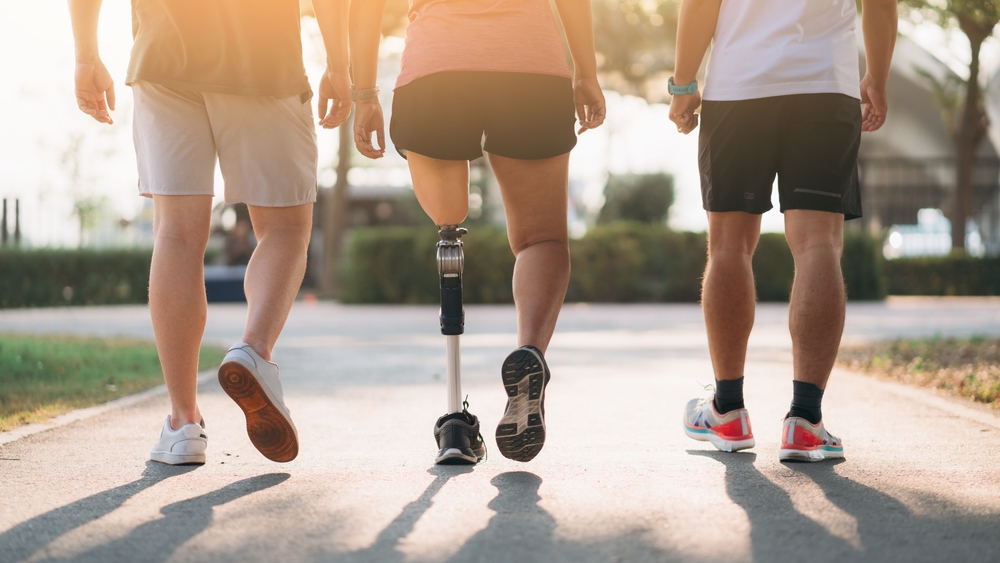Transforming Prosthetics With Ultrasound Technology
 Prosthetics have long been a field of remarkable ingenuity, but they’ve often fallen short of providing the intuitive, seamless functionality of a natural limb. In some fascinating and important ways, that’s changing with ultrasound technology. By offering real-time imaging, enhanced biofeedback systems, and data-driven insights, ultrasound technology is redefining how prosthetic devices are designed, developed, and used.
Prosthetics have long been a field of remarkable ingenuity, but they’ve often fallen short of providing the intuitive, seamless functionality of a natural limb. In some fascinating and important ways, that’s changing with ultrasound technology. By offering real-time imaging, enhanced biofeedback systems, and data-driven insights, ultrasound technology is redefining how prosthetic devices are designed, developed, and used.
Fitting and customization with ultrasound technology
One of the most significant challenges in prosthetics is achieving a perfect fit. Traditional methods rely on static measurements and subjective feedback, which can lead to discomfort and reduced functionality. Ultrasound technology addresses these limitations by providing real-time imaging of soft tissues, bones, and residual limbs during the fitting process.
- Dynamic visualization: Unlike static imaging methods, ultrasound captures how tissues move and shift during daily activities, ensuring a more accurate fit.
- Soft-tissue assessment: Ultrasound technology enables clinicians to evaluate residual limb health, identifying issues like swelling, scarring, or uneven tissue distribution that could affect the prosthetic’s performance.
- Iterative adjustments: The immediate feedback provided by ultrasound imaging allows for on-the-spot adjustments, reducing the need for repeated visits and enhancing patient satisfaction.
Beyond fitting, ultrasound technology is also influencing the design of prosthetic sockets. By mapping pressure points and areas of sensitivity, it ensures optimal weight distribution and reduces the risk of ulcers or discomfort. This is especially critical for patients with complex medical histories or unique anatomical considerations.
 Prosthetic control systems powered by ultrasound technology
Prosthetic control systems powered by ultrasound technology
Prosthetic control has evolved from basic mechanical systems to highly sophisticated neural and myoelectric interfaces. Wearable ultrasound technology provides precise muscle signal mapping for modern systems, improving their responsiveness and accuracy.
- Signal identification: Ultrasound identifies the specific muscles responsible for various movements, ensuring accurate signal capture.
- Individualized calibration: By understanding a patient’s unique muscular patterns, prosthetic devices can be calibrated for intuitive control.
- Improved training: Real-time feedback during muscle training sessions helps patients learn to use their prosthetics more effectively.
Ultrasound technology also aids in embedding advanced sensors within prosthetics. These sensors monitor blood flow, tissue changes, and neurological activity. This helps ensure the health of residual limbs, prevent complications from swelling or pressure points, and enhance biofeedback loops for smoother, more natural movements. This innovation shifts prosthetics from static tools to adaptive, responsive extensions of the body, significantly improving functionality and user experience.
Improving prosthetics design with ultrasound technology
Ultrasound technology isn’t just improving prosthetics for users — it’s also streamlining the development process for manufacturers. By incorporating ultrasound data during the prototyping phase, engineers can:
- Model realistic biomechanics: Use tissue elasticity and movement data to design prosthetics that mimic natural joint functions.
- Optimize materials: Select materials that interact seamlessly with residual limb tissues based on pressure and motion insights derived by ultrasound technology.
- Reduce development time: Leverage precise anatomical data to eliminate trial-and-error phases, accelerating time-to-market for new devices.

Challenges merging ultrasound technology with prosthetics
Despite its transformative potential, the adoption of ultrasound technology in prosthetics has been hampered by high costs and limited access to advanced imaging tools. Portable, cost-effective ultrasound devices are bridging this gap, enabling more clinics to leverage advanced imaging without significant financial strain. Training clinicians on the applications of ultrasound technology in prosthetics is key to expanding its use. Educational programs empower practitioners to integrate this technology into their practices, improving prosthetic fittings and outcomes for patients. And collaboration between manufacturers and healthcare providers is instrumental in reducing costs and enhancing distribution. Such partnerships make ultrasound technology more accessible and align advancements with real-world clinical needs.
But perhaps most importantly, integrating ultrasound into prosthetics demands strict adherence to FDA and international regulations. Biocompatibility standards, safety validations, and robust data security measures — especially for AI-powered devices — are essential for ensuring patient safety and fostering trust in this evolving technology.
What’s next for prosthetics and ultrasound technology?
Ultrasound technology is transforming prosthetics by enabling precision, adaptability, and smarter design. From improving fit and function to streamlining manufacturing and compliance, its impact spans the entire prosthetic lifecycle. As this technology becomes more accessible, it’s set to redefine what prosthetics can do and what they mean for each patient’s quality of life.

 Prosthetic control systems powered by ultrasound technology
Prosthetic control systems powered by ultrasound technology